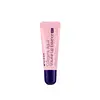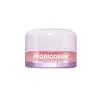What's inside
What's inside
 Key Ingredients
Key Ingredients

 Benefits
Benefits

 Concerns
Concerns

 Ingredients Side-by-side
Ingredients Side-by-side

Cetyl Ethylhexanoate
EmollientPolyglyceryl-2 Isostearate/Dimer Dilinoleate Copolymer
EmollientCaprylic/Capric Triglyceride
MaskingDiisostearyl Malate
EmollientPolyglyceryl-2 Triisostearate
EmulsifyingPolymethyl Methacrylate
Ethylhexyl Methoxycinnamate
UV AbsorberDimer Dilinoleyl Diisostearate
EmollientMicrocrystalline Wax
Emulsion StabilisingSorbitan Olivate
EmulsifyingEthylhexyl Salicylate
UV AbsorberOctyldodecyl Stearoyl Stearate
EmollientEuphorbia Cerifera Wax
Dimer Dilinoleyl Dimer Dilinoleate
EmollientSilica Dimethyl Silylate
EmollientPolyethylene
AbrasiveTocopherol
AntioxidantDehydroacetic Acid
PreservativeWater
Skin ConditioningOenothera Biennis Oil
EmollientCamellia Japonica Seed Oil
EmollientLimnanthes Alba Seed Oil
Skin ConditioningOlea Europaea Fruit Oil
MaskingVitis Vinifera Seed Oil
EmollientPanthenol
Skin ConditioningButylene Glycol
Humectant1,2-Hexanediol
Skin ConditioningHydrolyzed Collagen
EmollientCetyl Ethylhexanoate, Polyglyceryl-2 Isostearate/Dimer Dilinoleate Copolymer, Caprylic/Capric Triglyceride, Diisostearyl Malate, Polyglyceryl-2 Triisostearate, Polymethyl Methacrylate, Ethylhexyl Methoxycinnamate, Dimer Dilinoleyl Diisostearate, Microcrystalline Wax, Sorbitan Olivate, Ethylhexyl Salicylate, Octyldodecyl Stearoyl Stearate, Euphorbia Cerifera Wax, Dimer Dilinoleyl Dimer Dilinoleate, Silica Dimethyl Silylate, Polyethylene, Tocopherol, Dehydroacetic Acid, Water, Oenothera Biennis Oil, Camellia Japonica Seed Oil, Limnanthes Alba Seed Oil, Olea Europaea Fruit Oil, Vitis Vinifera Seed Oil, Panthenol, Butylene Glycol, 1,2-Hexanediol, Hydrolyzed Collagen
Hydrogenated Polyisobutene
EmollientPhytosteryl/Isostearyl/Cetyl/Stearyl/Behenyl Dimer Dilinoleate
Skin ConditioningPolyglyceryl-2 Triisostearate
EmulsifyingDiisostearyl Malate
EmollientEthylhexyl Methoxycinnamate
UV AbsorberMicrocrystalline Wax
Emulsion StabilisingEthylhexyl Salicylate
UV AbsorberTocopheryl Acetate
AntioxidantHydrogenated Castor Oil Isostearate
Skin ConditioningPolyethylene
AbrasiveCaprylic/Capric Triglyceride
MaskingEthylene/Propylene/Styrene Copolymer
Dimer Dilinoleyl Dimer Dilinoleate
EmollientMenthyl PCA
HumectantLithospermum Erythrorhizon Root Extract
Skin ConditioningPunica Granatum Fruit Extract
AntioxidantRibes Nigrum Fruit Extract
AstringentMonascus Extract
Skin ConditioningAnemarrhena Asphodeloides Root Extract
Skin ConditioningCollagen Extract
Skin ConditioningHippophae Rhamnoides Fruit Oil
Skin ProtectingCamellia Sinensis Seed Oil
HumectantCamellia Japonica Seed Oil
EmollientArgania Spinosa Kernel Oil
EmollientOlea Europaea Fruit Oil
MaskingMacadamia Integrifolia Seed Oil
Skin ConditioningHelianthus Annuus Seed Oil
EmollientSimmondsia Chinensis Seed Oil
EmollientHydrogenated Lecithin
EmulsifyingSilica Dimethyl Silylate
EmollientSorbitan Sesquioleate
EmulsifyingDimethicone
EmollientButylene/Ethylene/Styrene Copolymer
Ethylhexyl Palmitate
EmollientWater
Skin ConditioningPentaerythrityl Tetra-Di-T-Butyl Hydroxyhydrocinnamate
AntioxidantTribehenin
EmollientCandida Bombicola/Glucose/Methyl Rapeseedate Ferment
AntimicrobialLactobacillus Ferment
Skin ConditioningSorbitan Isostearate
EmulsifyingCeramide NP
Skin ConditioningDipropylene Glycol
Humectant1,2-Hexanediol
Skin ConditioningButyrospermum Parkii Butter
Skin ConditioningPanthenol
Skin ConditioningLactic Acid
BufferingButylene Glycol
HumectantGlyceryl Stearate
EmollientCollagen
MoisturisingGlycerin
HumectantCeramide As
Skin ConditioningCeramide AP
Skin ConditioningCholesterol
EmollientPalmitoyl Tripeptide-1
Skin ConditioningCeramide Ns
Skin ConditioningCeramide Ng
Skin ConditioningTocopherol
AntioxidantBetaine
HumectantFructooligosaccharides
HumectantBeta-Glucan
Skin ConditioningFructan
Skin ConditioningCeramide EOP
Skin ConditioningInulin
Skin ConditioningParfum
MaskingDehydroacetic Acid
PreservativePotassium Sorbate
PreservativeHydrogenated Polyisobutene, Phytosteryl/Isostearyl/Cetyl/Stearyl/Behenyl Dimer Dilinoleate, Polyglyceryl-2 Triisostearate, Diisostearyl Malate, Ethylhexyl Methoxycinnamate, Microcrystalline Wax, Ethylhexyl Salicylate, Tocopheryl Acetate, Hydrogenated Castor Oil Isostearate, Polyethylene, Caprylic/Capric Triglyceride, Ethylene/Propylene/Styrene Copolymer, Dimer Dilinoleyl Dimer Dilinoleate, Menthyl PCA, Lithospermum Erythrorhizon Root Extract, Punica Granatum Fruit Extract, Ribes Nigrum Fruit Extract, Monascus Extract, Anemarrhena Asphodeloides Root Extract, Collagen Extract, Hippophae Rhamnoides Fruit Oil, Camellia Sinensis Seed Oil, Camellia Japonica Seed Oil, Argania Spinosa Kernel Oil, Olea Europaea Fruit Oil, Macadamia Integrifolia Seed Oil, Helianthus Annuus Seed Oil, Simmondsia Chinensis Seed Oil, Hydrogenated Lecithin, Silica Dimethyl Silylate, Sorbitan Sesquioleate, Dimethicone, Butylene/Ethylene/Styrene Copolymer, Ethylhexyl Palmitate, Water, Pentaerythrityl Tetra-Di-T-Butyl Hydroxyhydrocinnamate, Tribehenin, Candida Bombicola/Glucose/Methyl Rapeseedate Ferment, Lactobacillus Ferment, Sorbitan Isostearate, Ceramide NP, Dipropylene Glycol, 1,2-Hexanediol, Butyrospermum Parkii Butter, Panthenol, Lactic Acid, Butylene Glycol, Glyceryl Stearate, Collagen, Glycerin, Ceramide As, Ceramide AP, Cholesterol, Palmitoyl Tripeptide-1, Ceramide Ns, Ceramide Ng, Tocopherol, Betaine, Fructooligosaccharides, Beta-Glucan, Fructan, Ceramide EOP, Inulin, Parfum, Dehydroacetic Acid, Potassium Sorbate
Ingredients Explained
These ingredients are found in both products.
Ingredients higher up in an ingredient list are typically present in a larger amount.
1,2-Hexanediol is a synthetic liquid and another multi-functional powerhouse.
It is a:
- Humectant, drawing moisture into the skin
- Emollient, helping to soften skin
- Solvent, dispersing and stabilizing formulas
- Preservative booster, enhancing the antimicrobial activity of other preservatives
Butylene Glycol (or BG) is used within cosmetic products for a few different reasons:
Overall, Butylene Glycol is a safe and well-rounded ingredient that works well with other ingredients.
Though this ingredient works well with most skin types, some people with sensitive skin may experience a reaction such as allergic rashes, closed comedones, or itchiness.
Learn more about Butylene GlycolCamellia Japonica Seed Oil comes from the Japanese Camellia plant. This plant is native to East Asia and known as "Tsubaki" in Japanese.
Camellia Japonica Seed Oil is rich in oleic acid. This makes it a great emollient. Emollients help soften and soothe the skin by forming a barrier. This barrier traps moisture within, keeping your skin hydated.
This ingredient is an emollient, solvent, and texture enhancer. It is considered a skin-softener by helping the skin prevent moisture loss.
It helps thicken a product's formula and makes it easier to spread by dissolving clumping compounds.
Caprylic Triglyceride is made by combining glycerin with coconut oil, forming a clear liquid.
While there is an assumption Caprylic Triglyceride can clog pores due to it being derived from coconut oil, there is no research supporting this.
Learn more about Caprylic/Capric TriglycerideDehydroacetic Acid is fungicide and bactericide. It is used as a preservative in cosmetics. Preservatives help elongate the shelf life of a product.
Dehydroacetic Acid is not soluble in water.
Diisostearyl Malate is an emollient and most often used in lip products. It comes from isostearyl alcohol, a fatty acid, and malic acid, an AHA.
As an emollient, Diisostearyl Malate helps create a thin film on your skin to trap moisture in. This helps keep your skin soft and smooth.
Dimer Dilinoleyl Dimer Dilinoleate isn't fungal acne safe.
Ethylhexyl Methoxycinnamate is an organic compound that provides UVB protection. It often goes by the more common name of octinoxate. It is created from methoxycinnamic acid and 2-ethylhexanol.
Ethylhexyl Methoxycinnamate absorbs UVB rays with wavelengths between 280-320 nm. UV absorbers protect your skin by using chemical reactions to convert UV rays into heat and energy.
UVB (290-320 nm) rays emit more energy than UVA rays. They are capable of damaging DNA, causing sunburns and are thought to be linked to skin cancer.
The state of Hawaii has banned sunscreens containing octinoxate due to its potential impact on coral reefs. More research is needed to bridge gaps in this research. The European Union allows higher levels of octinoxate in sunscreens than the US and Australia.
Ethylhexyl Methoxycinnamate is oil soluble. It is not stable and may lose efficacy when exposed to sunlight.
Learn more about Ethylhexyl MethoxycinnamateEthylhexyl Salicylate is an organic compound used to block UV rays. It primarily absorbs UVB rays but offers a small amount of UVA protection as well.
Commonly found in sunscreens, Ethylhexyl Salicylate is created from salicylic acid and 2-ethylhexanol. You might know salicylic acid as the effective acne fighter ingredient and BHA.
The ethylhexanol in this ingredient is a fatty alcohol and helps hydrate your skin, similar to oils. It is an emollient, which means it traps moisture into the skin.
According to manufacturers, Ethylhexyl Salicylate absorbs UV wavelength of 295-315 nm, with a peak absorption at 307-310 nm. UVA rays are linked to long term skin damage, such as hyperpigmentation. UVB rays emit more energy and are capable of damaging our DNA. UVB rays cause sunburn.
Learn more about Ethylhexyl SalicylateMicrocrystalline Wax is created by de-oiling petroleum. It is highly refined and purified before being added to cosmetics.
Microcrystalline Wax is used to enhance the texture and create even consistency. It helps stabilize a product by preventing ingredients from separating.
Olea Europaea Fruit Oil is the fixed oil obtained from the ripe fruit of the Olive. In other words - olive oil.
The primary contents of olive oil are glycerides of the fatty acids linoleic, oleic and palmitic.
Olive oil also contains antioxidants such as Vitamin E. Antioxidants may help reduce signs of aging by fighting unstable free-radical molecules. It also contains Vitamins A (retinol), D, and K.
The squalene in olive oil makes it a great emollient. Emollients help soothe and soften your skin by trapping moisture in. This makes olive oil a great skin moisturizer.
Studies show olive oil to have antibacterial and antifungal properties in low concentrations. Another study found olive oil irritated sensitive oily skin. We always recommend speaking with a professional about using this ingredient in your routine.
Due to the fatty acid content, this ingredient may not be fungal-acne safe.
Learn more about Olea Europaea Fruit OilPanthenol is a common ingredient that helps hydrate and soothe the skin. It is found naturally in our skin and hair.
There are two forms of panthenol: D and L.
D-panthenol is also known as dexpanthenol. Most cosmetics use dexpanthenol or a mixture of D and L-panthenol.
Panthenol is famous due to its ability to go deeper into the skin's layers. Using this ingredient has numerous pros (and no cons):
Like hyaluronic acid, panthenol is a humectant. Humectants are able to bind and hold large amounts of water to keep skin hydrated.
This ingredient works well for wound healing. It works by increasing tissue in the wound and helps close open wounds.
Once oxidized, panthenol converts to pantothenic acid. Panthothenic acid is found in all living cells.
This ingredient is also referred to as pro-vitamin B5.
Learn more about PanthenolPolyethylene is a synthetic ingredient that helps the skin retain moisture. It is a polymer.
It is also typically used within product formulations to help bind solid ingredients together and thicken oil-based ingredients. When added to balms and emulsions, it helps increase the melting point temperature.
This ingredient is a form of glycerin with emulsifying and emollient properties.
As an emulsifier, this ingredient helps keep products together while adding a thick texture. The manufacturer states this ingredient has emollient properties. Emollients help keep the skin hydrated by trapping moisture in.
Polyglyceryl-2 Triisostearate is created by reacting diglycerin and isostearic acid. Due to the isostearic acid base, it may not be safe for Malassezia or fungal acne.
Learn more about Polyglyceryl-2 TriisostearateThis silica is mainly used to thicken oils and suspend particles in oils. It is not water soluble.
According to the manufacturer, it:
The manufacturer also claims this ingredient to be useful in makeup.
In lipstick formulations, this ingredient improves color payoff, reduces pigment settling, and reduces oil bleeding. This ingredient also improves the grip of powder products such as dry shampoos.
Learn more about Silica Dimethyl SilylateTocopherol (also known as Vitamin E) is a common antioxidant used to help protect the skin from free-radicals and strengthen the skin barrier. It's also fat soluble - this means our skin is great at absorbing it.
Vitamin E also helps keep your natural skin lipids healthy. Your lipid skin barrier naturally consists of lipids, ceramides, and fatty acids. Vitamin E offers extra protection for your skin’s lipid barrier, keeping your skin healthy and nourished.
Another benefit is a bit of UV protection. Vitamin E helps reduce the damage caused by UVB rays. (It should not replace your sunscreen). Combining it with Vitamin C can decrease sunburned cells and hyperpigmentation after UV exposure.
You might have noticed Vitamin E + C often paired together. This is because it is great at stabilizing Vitamin C. Using the two together helps increase the effectiveness of both ingredients.
There are often claims that Vitamin E can reduce/prevent scarring, but these claims haven't been confirmed by scientific research.
Learn more about TocopherolWater. It's the most common cosmetic ingredient of all. You'll usually see it at the top of ingredient lists, meaning that it makes up the largest part of the product.
So why is it so popular? Water most often acts as a solvent - this means that it helps dissolve other ingredients into the formulation.
You'll also recognize water as that liquid we all need to stay alive. If you see this, drink a glass of water. Stay hydrated!
Learn more about Water